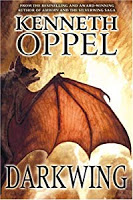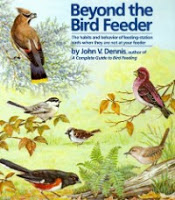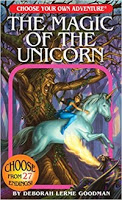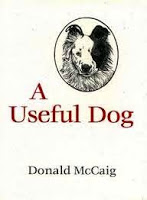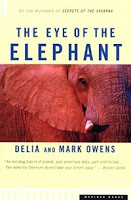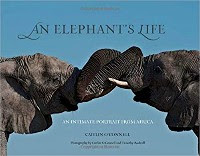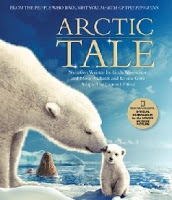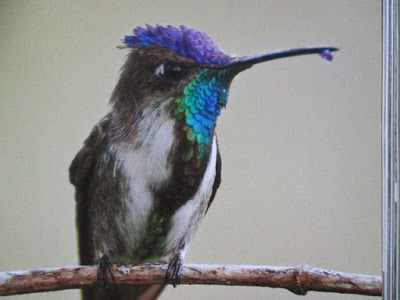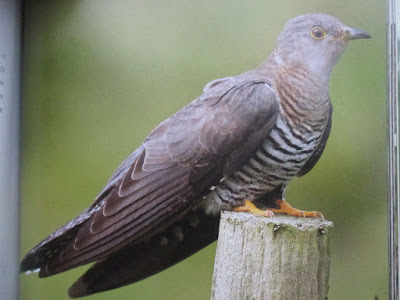I don’t remember where I first heard about this book- it’s been on my TBR list since 2010! I’m glad I finally got hold of a copy to read, it really had me turning the pages. Darkwing is set far back in prehistory, when the dinosaurs are dying out and mammals are starting to fill the gaps in the ecosystem. The main character, Dusk, belongs to a colony of ‘chiropters’- an imagined species that precluded the bats (all the other prehistoric animals in this book are based on real species). Dusk is different from his companions- he has weak, stunted hind legs and a stronger chest and forelimbs as compensation. The chiropters cannot truly fly- they glide between trees and then climb the trunks to a higher vantage point again. But Dusk- also born with near-naked wings (the chiropters call them ‘sails’) and larger ears- feels a strange urge to try flapping his forelimbs. He is fascinated by the birds that fly above- the upper reaches of the trees are forbidden territory, belonging to the birds. He also discovers later in the story that he can use his echolocation not only to hone in on insect prey, but to ‘see’ in the dark. Needless to say, Dusk does not quite fit in, and his community finds his differences at first suspicious, then later on an outright threat. Now there are more beasts stalking the land, as the dinosaur species die out- and when some felids (weasel-like precursors to cats) that have developed a new taste for flesh find their colony, the chiropters might need Dusk to help them escape to safety and find a new home.
Even though some aspects of this story felt a bit simplistic- how convenient was it that Dusk had not one unusual characteristic, but all three making him one of the first true bats- I found it really intriguing. The world of the batlike chiropters is pretty believable, and their conversations didn’t upset my suspension of belief too much. The idea that the dinosaurs died out not only from sudden climate change upsetting their world- too cold for their bodies that can’t regulate temperature, lack of food sources weakens them and disease becomes widespread- but also because of actions taken by the smaller, weaker mammals- was a new one. The parallel storyline from the viewpoint of a felid that moved beyond their normal died of insects, larvae and eggs to eating other animals and got exiled by his fellow felids who were horrified by his new cravings, was just as interesting to me. Eventually the paths of the chiropters and felids intersect, as Dusk’s colony set out on a journey, encountering all kinds of dangers and new strange animals. Really, the conflicts piled on thick and fast near the end, but it wrapped up pretty tidy.
This book reminded me of so many others. I\’m not alone comparing it to Watership Down. I couldn’t help but think of Ratha\’s Creature– prehistoric talking animals, one has a new ability that threatens the established way of the group. And even oddly enough, Stellaluna came to mind- the bat that interacted so much with birds, struggling with self-identity. As Dusk is seeking his own way- can he suppress his desire to fly in order to fit in? why is he so different? – he’s torn by loyalty to his family and deeply troubled at growing friction within his colony as he learns more about their past and the group disagrees on how to face their future when all the dangers seem overwhelming. Darkwing is shelved among juvenile fiction, but I would say it’s for older, mature readers in the age range. There’s some brutality, descriptions of animals attacking tearing apart and eating each other, and other frightful scenes. Also really serious stuff about loosing family members, challenging the status quo and more. Oh- and reminding me of Bannertail, there’s one scene where Dusk eats a psychoactive mushroom, and another where the young bats eat tea leaves enjoying the jittery feeling (which their parents frown upon). Ha.
Borrowed from the public library.
